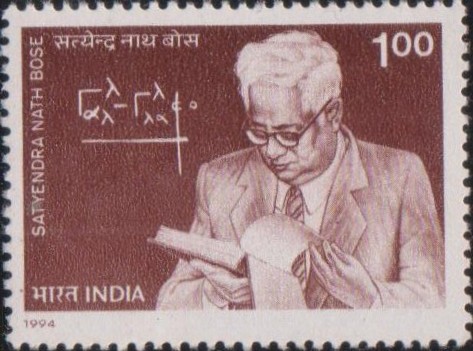
Satyendra Nath Bose
A commemorative postage stamp on the Birth Centenary of Satyendranath Basu, an Indian physicist specializing in theoretical physics :
 Issued by India
Issued by India
Issued on Jan 1, 1994
Issued for : The Department of Post issues is happy to pay homage through this commemorative postage stamp to this great Indian scientist.
Credits :
Stamp, FDC & Cancellation : S.N. Bose National Centre for Basic Sciences, Calcutta
Type : Stamp, Mint Condition
Colour : Single Colour
Denomination : 100 Paise
Overall size : 3.91 x 2.90 cms.
Printing size : 3.55 x 2.54 cms.
Perforation : 13 x 13
Paper : Indigenous Un W/M Adhesive Coated Stamp Paper
Number of stamps Printed : 0.6 Million
Number per issue sheet : 35
Printing Process : Photogravure
Printer : India Security Press
Name : Satyendra Nath Bose
Born on Jan 1, 1894 at Calcutta, Bengal Presidency, British India
Died on Feb 4, 1974 at Calcutta, India
About :
- Professor Satyendra Nath Bose, born on 1st January, 1894, had a brilliant academic career beginning with his schooling in Hindu School, Calcutta, and later in the Presidency College and Calcutta University.
- Prof. S.N. Bose‘s contribution to science spanned a wide field touching upon areas of Physics, Chemistry and Life Sciences. It was in the realm of Theoretical Physics, however, that he had most eminent achievement when he derived Planck‘s radiation law considering only the corpuscular nature of light. This approach was greatly appreciated by Albert Einstein and even led to their joint effort that eventually gave birth to Bose-Einstein Statistics, a landmark in Physics. The true significance of this work found recognition when, defining the fundamental nature of two types of particles existing in nature, one was named after Bose as Boson, the other being Fermion, named after the famous Physicist Enrico Fermi.
- The other significant contribution of Professor Satyendra Nath Bose to the realm of Physics is his proposal of unified field theory, embracing the gravitational and electro magnetic forces together.
- As an experimentalist, Prof. Bose had worked on fluorescence, X-ray crystal structure analysis, thermoluminescence and radiation physics. He had active interest in instrumentation and fabrication of scientific equipment.
- As a teacher he was highly revered and loved by his students. He trained and encouraged many youth for scientific research. His deep conviction about one’s mother tongue being the only appropriate medium for propagating science among the people in general, led to his setting up the Bangiya Bijnan Parishad (Science Association of Bengal). He was an ardent admirer of art & music also and he himself was a good esraj player.
- He held various important positions including the post of Vice Chancellor, Visva Bharati, and he was a National Professor of Physics. He was made a fellow of the Royal Society (London) in 1958 and was honoured with Padma Vibhushan in 1954. He was also a nominated member of the Rajya Sabha during the years 1952-58.
- Text source : S.N. Bose National Centre for Basic Sciences, Calcutta.


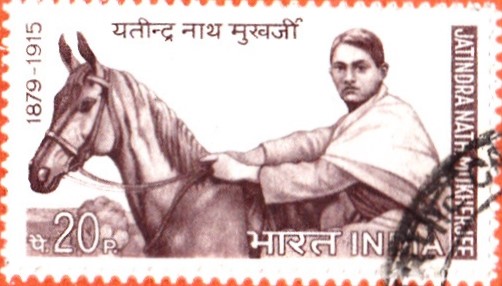
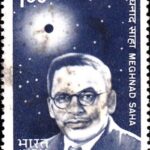


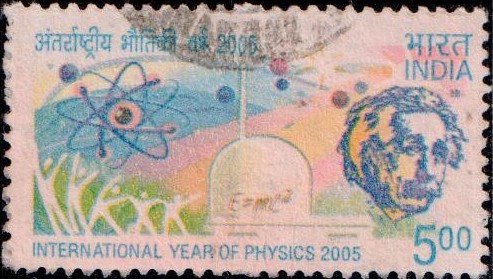
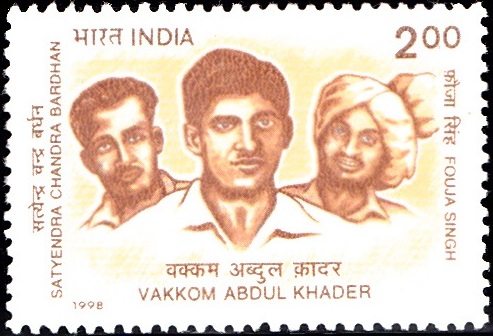
[…] of S Chandrasekhar who established the existence of Neutron Stars and Black holes. It also led S.N. Bose and Einstein to develop the Bose Einstein Statistics that fundamentally altered our view on how […]